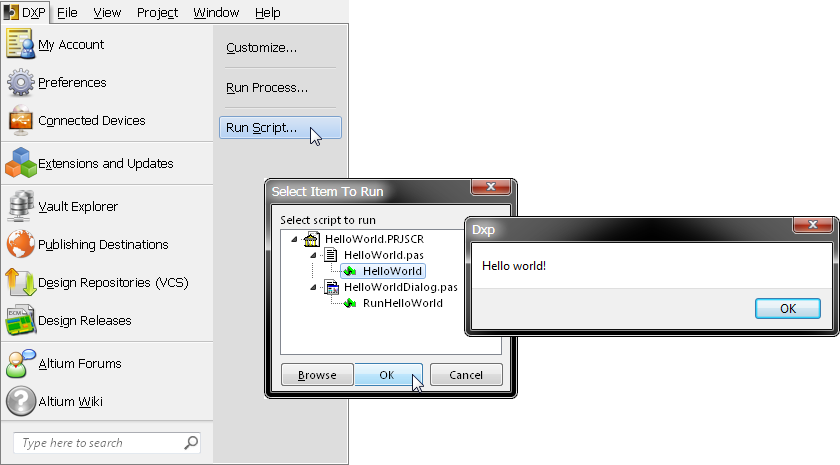

The final step of the PCB development path is uploading files for the manufacturer to create a printed circuit board that will be used to create a finished device. After the PCB is completely designed and error-free, the documentation development stage begins including exporting the Bill Of Materials (BOM) exporting, creating assembly drawings, etc. During PCB design, all rules such as Design For Assembly (DFA), Design Rules Check (DRC), and Design For Manufacture (DFM) are checked online, all of which help decrease errors and problems. This step includes forming the board shape, creating a layer set (stackup), synchronizing with the schematic, design rules definition, components placement, routing, and much more. The next step contains all the work related to PCB design. The Electrical Rules Check (ERC) design rules will be checked several times while working on the schematic, and once completed, the project will be compiled. After the project is created, work starts on the electrical schematic design on which the components are placed and their interconnections are defined. In this guide, you will use the existing library of managed components. At this point, it is assumed that a library is created and placed in your repository. The development path of every PCB always starts with creating a new project in which the design of the schematic and board will be carried out and synchronized.
#ALTIUM DESIGNER 17 DESCRIPTION WIKI SOFTWARE#
From these stages, as from the blocks, a typical design path is built. Fusion 360 is a cloud-based 3D modeling, CAD, CAM, CAE, and PCB software platform for product design and manufacturing. From the beginning of the project to its completion, the designer must perform many operations related to each particular stage of the development path. Altium Designer offers a complete set of tools allowing the engineer to follow the PCB development path without leaving the design environment and without resorting to third-party programs. In order to get the results closer to the ideal, the designer of the future device must make proper calculations, imagine the consequences of decisions made, compare different device configurations and, finally, make the right choice. We may also share this information with third parties for this purpose.Each new project includes a new solution, new details, and new compromises to which the engineer MUST pay attention. We will use this information to make the website and the advertising displayed on it more relevant to your interests. Targeting/Profiling Cookies: These cookies record your visit to our website and/or your use of the services, the pages you have visited and the links you have followed. Loss of the information in these cookies may make our services less functional, but would not prevent the website from working. Altium Designer is a comprehensive design system for high-speed electronic devices based on printed circuit boards, which allows the developer to create projects, starting with the schematic diagram and VHDL description of FPGAs, simulate the resulting circuits and VHDL codes, prepare files for production, and the Live Design concept called live design, allows you to complete the project by. This enables us to personalize our content for you, greet you by name and remember your preferences (for example, your choice of language or region). Functionality Cookies: These cookies are used to recognize you when you return to our website. This helps us to improve the way the website works, for example, by ensuring that users are easily finding what they are looking for. Analytics/Performance Cookies: These cookies allow us to carry out web analytics or other forms of audience measuring such as recognizing and counting the number of visitors and seeing how visitors move around our website. They either serve the sole purpose of carrying out network transmissions or are strictly necessary to provide an online service explicitly requested by you.

The cookies we use can be categorized as follows: Strictly Necessary Cookies: These are cookies that are required for the operation of or specific functionality offered.


 0 kommentar(er)
0 kommentar(er)
